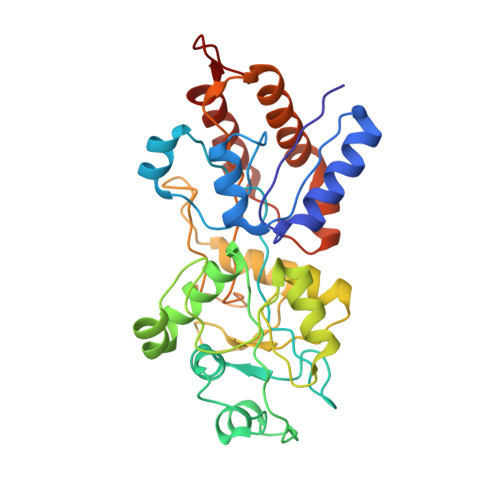Fine tuning the specificity of the periplasmic phosphate transport receptor. Site-directed mutagenesis, ligand binding, and crystallographic studies.
Wang, Z., Choudhary, A., Ledvina, P.S., Quiocho, F.A.(1994) J Biol Chem 269: 25091-25094
- PubMed: 7929197
- DOI: https://doi.org/10.2210/pdb1pbp/pdb
- Primary Citation of Related Structures:
1PBP - PubMed Abstract:
Phosphorous, primarily in the form of phosphate, is a critical nutrient for the life of a cell. We have previously determined the 1.7-A resolution structure of the phosphate-binding protein, an initial receptor for the high-affinity phosphate active transport system or permease in Escherichia coli (Luecke, H., and Quiocho, F.A. (1990) Nature 347, 402-406). This structure is the first to reveal the key role of hydrogen bonding interactions in conferring the high specificity of the permease, a specificity also shared by other phosphate transport systems. Both monobasic and dibasic phosphates are recognized by the phosphate-binding protein with Asp56 playing a key role. Here we report site-directed mutagenesis, ligand binding, and crystallographic studies of the binding protein which show that introduction of one additional Asp by mutagenesis of the Thr141 in the ligand-binding site restricts binding to only the monobasic phosphate.
Organizational Affiliation:
Structural and Computational Biology and Molecular Biophysics Program, Baylor College of Medicine, Houston, Texas 77030.















